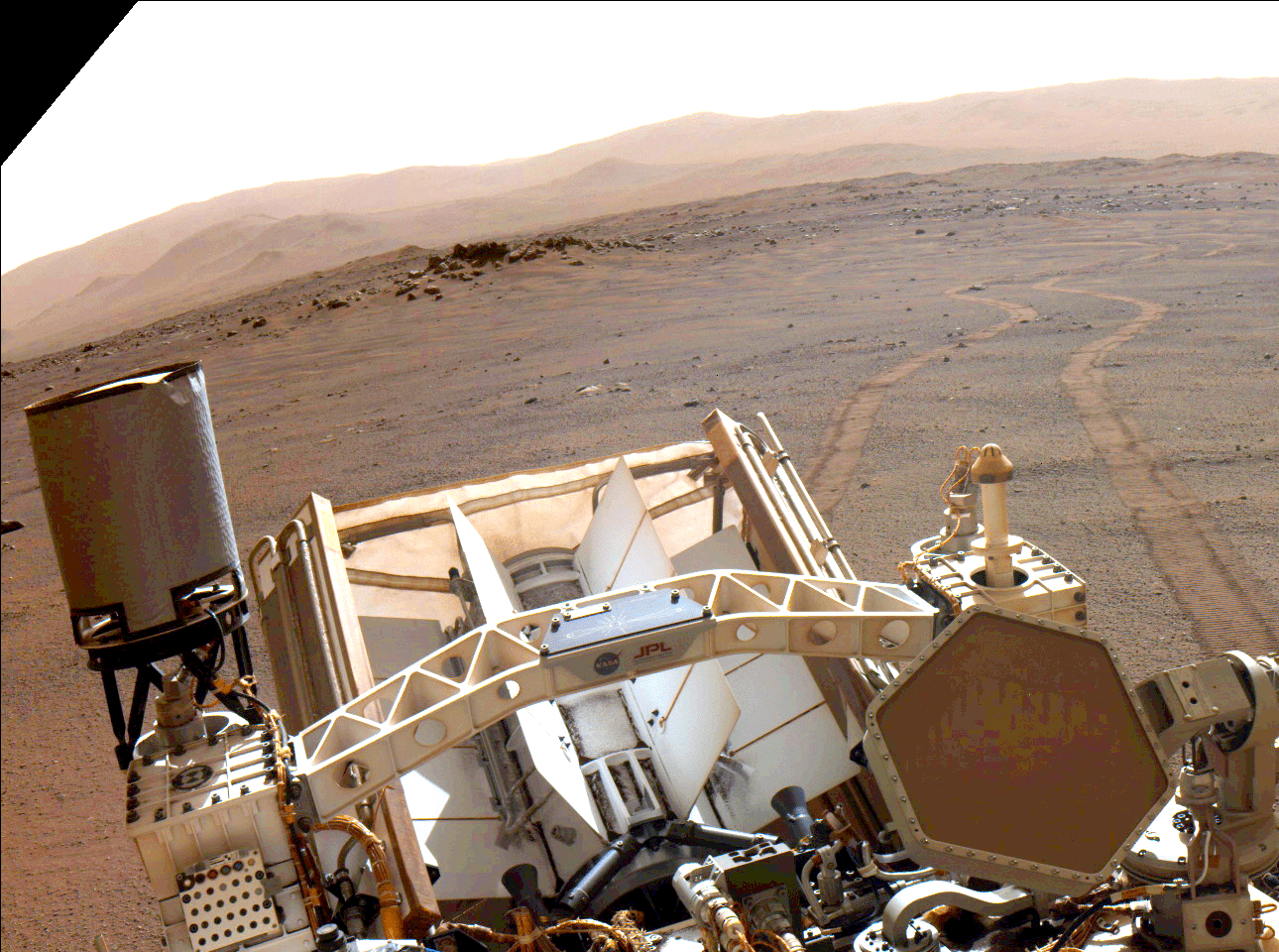 Close-up of NASA’s Perseverance Mars rover as it looks back at its wheel tracks on March 17, 2022, the 381st Martian day, or sol, of the mission.
Close-up of NASA’s Perseverance Mars rover as it looks back at its wheel tracks on March 17, 2022, the 381st Martian day, or sol, of the mission.
Credit: NASA
The recent shipment of heat source plutonium-238 from the U.S. Department of Energy’s (DOE’s) Oak Ridge National Laboratory to its Los Alamos National Laboratory is a critical step toward fueling planned NASA missions with radioisotope power systems.
This shipment of 0.5 kilograms (a little over 1 pound) of new heat source plutonium oxide is the largest since the domestic restart of plutonium-238 production over a decade ago. It marks a significant milestone toward achieving the constant rate production average target of 1.5 kilograms per year by 2026.
Radioisotope power systems, or RPS, enable exploration of some of the deepest, darkest, and most distant destinations in the solar system and beyond. RPS use the natural decay of the radioisotope plutonium-238 to provide heat to a spacecraft in the form of a Light Weight Radioisotope Heater Unit (LWRHU), or heat and electricity in the form of a system such as the Multi-Mission Radioisotope Thermoelectric Generator (MMRTG).
The DOE has produced the heat source plutonium oxide required to fuel the RPS for missions such as NASA’s Mars 2020. The first spacecraft to benefit from this restart, the Perseverance rover, carries some of the new plutonium produced by DOE. An MMRTG continuously provides the car-sized rover with heat and about 110 watts of electricity, enabling the exploration of the Martian surface and the gathering of soil samples for possible retrieval.
“NASA’s Radioisotope Power Systems Program works in partnership with the Department of Energy to enable missions to operate in some of the most extreme environments in our solar system and interstellar space,” said Carl Sandifer, RPS program manager at NASA’s Glenn Research Center in Cleveland.
For over sixty years, the United States has employed radioisotope-based electrical power systems and heater units in space. Three dozen missions have explored space for decades using the reliable electricity and heat provided by RPS.
NASA and DOE are continuing their long-standing partnership to ensure the nation can enable future missions requiring radioisotopes for decades to come.





